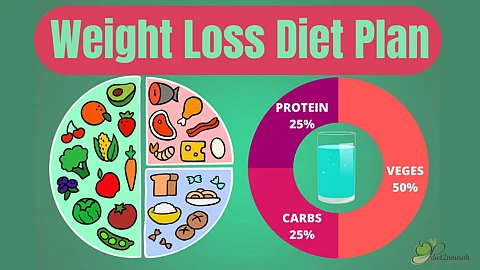
- Home
- Live Blog
- Breaking News
- Top Headlines
- Cities
- NE News
- Sentinel Media
- Sports
- Education
- Jobs

A healthy Indian diet plan for weight loss focuses on balancing macronutrients, incorporating diverse foods, and emphasizing traditional ingredients that promote health and well-being. Indian cuisine is naturally rich in whole grains, vegetables, legumes, and spices that offer immense health benefits.
This guide will walk you through key principles, sample diet plans, and actionable tips for achieving sustainable weight loss while enjoying delicious Indian meals.
Key Principles of a Indian Diet Plan for Weight Loss
1. Balance Macronutrients
Carbohydrates: Prioritize complex carbohydrates like whole grains (brown rice, millets, oats), which release energy slowly and keep you full longer. Avoid refined carbs like white rice, white bread, and maida-based foods.
Proteins: Include plant-based proteins like lentils, chickpeas, soy, and paneer, or lean animal proteins like fish, chicken, and eggs. Protein helps build muscle, boosts metabolism, and curbs hunger.
Fats: Incorporate healthy fats like nuts, seeds, coconut, ghee (in moderation), and cold-pressed oils. Avoid hydrogenated fats and limit the intake of fried foods.
2. Focus on Fiber
Foods rich in fiber, such as fruits, vegetables, whole grains, and legumes, aid digestion and promote a feeling of fullness. Fiber also stabilizes blood sugar levels and supports weight loss.
3. Portion Control
Large portions can lead to overeating. Use smaller plates and serve controlled quantities to avoid calorie excess while enjoying traditional Indian meals. Portion control is an important weight loss diet plan involving Indian food.
4. Hydration
Drinking plenty of water and staying hydrated is essential for metabolism and reducing hunger pangs. Include hydrating drinks like coconut water, buttermilk, or lemon water. Avoid sugary drinks.
5. Seasonal and Local Foods
Incorporate seasonal fruits and vegetables like mangoes in summer or pumpkins in winter. Locally sourced produce is fresher, more nutritious, and better for the environment. A traditional Indian diet for weight loss can include several seasonal fruits and vegetables which are available easily in the country’s markets.
6. Mindful Eating
Chew slowly, savor each bite, and avoid distractions like screens during meals. This helps prevent overeating and aids digestion.
Tips for Success
Avoid Crash Diets
Extreme calorie restriction slows metabolism and leads to nutritional deficiencies. Focus on gradual, sustainable changes.
Incorporate Physical Activity
Pair your traditional Indian diet for weight loss with daily exercise, such as brisk walking, yoga, or strength training, for optimal weight loss results.
Use Indian Spices
Spices like turmeric, cumin, cinnamon, and ginger boost metabolism and aid digestion. They are valuable parts of the best weight loss diet in India.
Meal Prep
Preparing meals in advance helps you stick to your plan and avoid unhealthy food choices.
Be Consistent
Stick to regular meal timings and avoid skipping meals to maintain a steady metabolism.
ALSO WATCH: